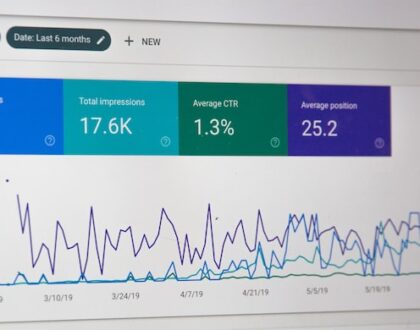5 Keys for Cross-Functional Teamwork in Marketing

by editor
As a senior marketing leader, you’re all too aware with the bottlenecks and train wrecks produced by silos and a lack of alignment among various teams and departments in the marketing ecosystem. CMOs frequently cite this as one of the most significant impediments to smooth marketing operations and attaining desired outcomes.
However, the solution does not just involve improved communication or coordination among discrete teams and roles. The most effective marketing organizations (MEMOs) understand that meaningful cross-functional collaboration to bridge organizational barriers necessitates a fundamental adjustment in marketing structure and work flow.
In today’s marketing world, versatility, agility, and speed are essential. Initiatives necessitate input, execution, and buy-in from numerous positions throughout the business, ranging from creative to analytics, operations to IT, and beyond. Rigid boundaries between these jobs, along with a lack of common context, impede innovation and cause friction.
So, what secrets do MEMOs have about breaking down divisions and creating a climate of seamless cross-functional collaboration?
Secret #1: Pods FTW!
Rather than having compartmentalized teams organized by function or channel, many MEMOs divide their marketing operations into multifunctional pods. Each pod combines all of the jobs and skill sets required to plan, execute, and optimize a specific marketing sector in a cohesive, collaborative manner. The organizational chart does not alter; rather, the approach to work does.
A “digital demand gen” pod, for example, could include search marketers, marketing operations, site developers, conversion analysts, and sales enablement. A “product marketing” pod could include product experts, messaging strategists, content writers, and sales trainers. You might even explore developing pods for a single campaign, product, or line of business.
Individual SMEs do not have to be dedicated to a single pod; they can work in numerous pods at the same time, depending on the volume of work in each one.
The exact composition varies based on the charter, but the basic idea remains the same: embed all of the functions required to deliver holistic, excellent work within each pod. This minimizes the waste and misalignment that might occur with several handoffs and promotes shared accountability and meaningful cooperation from the start of the project.
Secret #2: Redundancy is not always a dirty word.
In addition to mixing functions inside each pod, consider purposely creating some redundancy and overlapping duties among pod members. While this may appear paradoxical, it can help avoid the “get out of my sandbox” and “that’s not my job” mentality.
For example, your web developer and MOps specialist within a pod could share duties for managing the marketing stack and automations. Alternatively, your messaging strategist and content marketing manager could both provide input on content strategy conversations.
This sharing of responsibility fosters empathy and respect among positions while also encouraging knowledge exchange and a sense of trust and teamwork. MEMO leaders highlight a few other benefits of this method. It protects the team from experiencing single-source failure syndrome and PTO paralysis.
Secret #3: You cannot communicate enough.
However, pods cannot become islands. Open communication between pods, frequent check-ins, and a shared grasp of the big picture vision are essential for keeping everyone on the same page.
Use technology to ensure that everyone has simple access to and understanding of the current objectives, priorities, and workstreams across the whole marketing ecosystem. A collaborative project management platform with automatic dashboards, real-time reporting, and analytics is an excellent place to begin.
MEMOs also use technology for digital asset management and knowledge exchange, which adds context to the basic procedural information.
Also, be intentional about building forums for pods and individuals to communicate on a regular basis. Standing meetings, Slack channels, and in-person events can all contribute to the continuous flow of information and context required for effective collaboration.
Secret #4: Collaboration is a culture, and all eyes are on you.
Even with the proper structures and mechanisms in place, these methods of operation can fail in the absence of the appropriate culture and leadership. Collaboration, according to MEMOs, is a culture rather than a method.
You and your senior leaders must model and actively cultivate a psychologically safe workplace in which people feel comfortable taking chances, expressing opinions, dissenting, and challenging the status quo without fear of shame or repercussions.
MEMOs actively seek opportunities to hear and highlight diverse voices, in addition to ensuring safety. They provide an equitable platform for ideas from all levels and responsibilities within their teams and practice inclusive decision-making.
Lead with humility and kindness. Show vulnerability, accept mistakes, and make room for people to bring their complete real self to collaborations rather than simply showing up with titles or positions.
Most essential, as a senior leader, ensure that you model these behaviors openly for your teams to witness. Invite colleagues to department meetings and publish joint reports or memos. If you work in an office, be seen working and eating lunch together.
Secret #5: Your most essential collaborators are usually not within your marketing organization.
Finally, the term “cross-functional” should be stretched outside the marketing context. MEMOs are strongly connected and aligned with other major business units, including as sales, product, customer success, human resources, and legal. They work together to provide seamless consumer experiences.
Consider assigning cross-functional members from these groups to relevant marketing pods and workstreams from the start. Bring external partners, such as agencies, consultants, and vendors, closer to the fold in meaningful ways that go beyond outsourcing execution. The more the merrier.
Encourage information sharing and cross-team alignment.
Silos make it difficult to offer high-quality work at the speed of culture. Breaking down barriers is more than just increasing efficiency or production; it’s about establishing an environment in which people feel appreciated, heard, and encouraged to do their best work.
It is possible to bridge those gaps both within and outside of the marketing ecosystem by proactively evaluating working team configurations, incorporating some purposeful overlap, and ensuring that communication and information sharing are regular and simple. Actively promote safety and diversity while broadening your concept of “partner.” Let us start pulling down those walls.
Recommended Posts

Can Attentiveness Actually Drive Campaign Success?
November 8, 2024

Marketers Must Create Time for Time Management
October 25, 2024

Maximizing Revenue Growth Through Sales and Marketing Alignment
October 11, 2024
